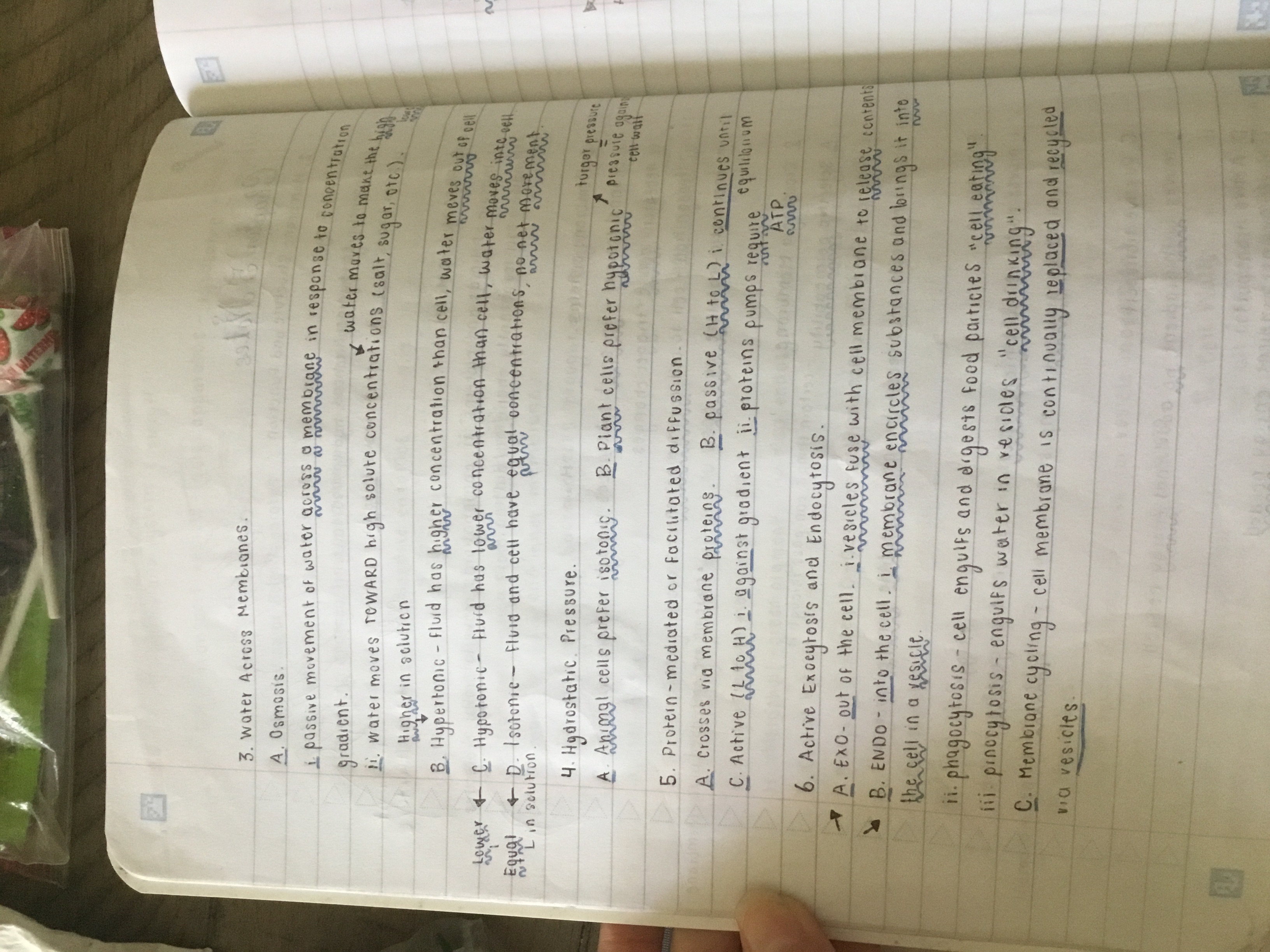Water movement across membranes including osmosis and transport processes like exocytosis and endocytosis.

Understand the Problem
The question is discussing the mechanisms of water movement across cell membranes, specifically through osmosis, hydrostatic pressure, and types of cellular transport processes such as exocytosis and endocytosis. It is clearly focused on biological concepts related to cell biology.
Answer
Notes cover osmosis, transport processes, and solution types across membranes.
The notes describe various concepts related to water movement across membranes, including osmosis and transport processes like exocytosis and endocytosis. They cover osmosis as the passive movement of water, differences in solutions (hypertonic, hypotonic, isotonic), hydrostatic pressure, facilitated diffusion, and the processes of endocytosis and exocytosis.
Answer for screen readers
The notes describe various concepts related to water movement across membranes, including osmosis and transport processes like exocytosis and endocytosis. They cover osmosis as the passive movement of water, differences in solutions (hypertonic, hypotonic, isotonic), hydrostatic pressure, facilitated diffusion, and the processes of endocytosis and exocytosis.
More Information
Osmosis involves water movement towards high solute concentrations. Exocytosis releases contents outside the cell, while endocytosis brings substances into the cell through vesicles.
Tips
A common mistake is misunderstanding the movement direction of water in osmosis; it moves from low to high solute concentration.
AI-generated content may contain errors. Please verify critical information